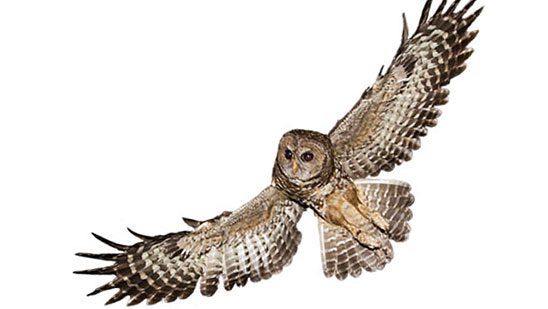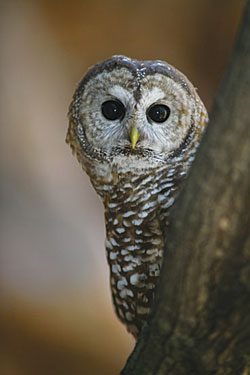Listening in on Mexican Spotted Owls at Fort Huachuca
By Michael E. Powers
April 15, 2011
In February I visited southeastern Arizona to deploy eight autonomous recording units (ARUs) on Ft. Huachuca. Each week we will analyze the recordings, looking for calls of the Mexican subspecies of Spotted Owl, a well-known resident on Ft. Huachuca. In fact, Ft. Huachuca’s Scheelite Canyon is listed in several birder’s guides to Arizona as the place to view the Spotted Owl.
Because the owl is listed as a threatened species by both the U.S. and Mexican governments, a monitoring program exists throughout the owl’s range. The Mexican Spotted Owl Survey Protocol was designed by the U.S. Fish and Wildlife Service to survey owl habitats that may be impacted by human activities, such as at Ft. Huachuca, where our work is part of a study funded by the Department of Defense.
During the breeding season, survey participants visit known or suspected habitats at night to listen for owls. If they don’t hear any, they call or use recordings to prompt owls to respond. If any owls do, the observers follow up with a daytime visit to determine if it was a single bird or a pair, if the owls are breeding, and if they have young.
We use autonomous recording units to thoroughly survey areas where owls are suspected to be present but haven’t yet been confirmed. Observers are limited in how many visits they can make to known or potential sites, but recording units can monitor the entire nocturnal period throughout the season. Some potential habitats are unsafe to visit at night due to the rugged terrain, but the units can be deployed during the day to collect information where survey points are impractical. And although inclement weather may mean a scheduled survey is missed, the ARUs can record what happens regardless of conditions. The ARUs will remain in the field until late summer. The information collected will be used to inform surveys in the future, perhaps modifying traditional protocols altogether.

We will analyze the recordings to gather information on Spotted Owl vocalization behavior throughout the night and throughout the breeding season. How frequently do they call, how often are their various calls given, and how do these patterns relate to environmental conditions such as ambient light and temperature?
These recordings will provide information not only about the presence or absence of owls and their vocalizing behavior, but also about other species of interest. When Mexican Whip-poor-wills return to Arizona in late April and May, the units will capture their first songs from their breeding territories, and gather the same kind of information that we are collecting for the owls. And following the monsoons in June, some units will be deployed to survey for non-avian species such as the Arizona tree frog and the Arizona barking frog, which typically only vocalize for one to two weeks each year.
Already we’ve been getting exciting results. On March 12, I received the first set of recordings from Ft. Huachuca, and in a random “just checking what’s there” bout of scrolling around, I came across a series of Spotted Owl calls—a male giving his “Four-note Location Call.” These occurred on February 27, starting at 43 minutes after sunset and continuing for at least 20–25 minutes. I can’t wait to see what more our ARUs will be picking up.
Mike Powers is the project leader for Acoustic Monitoring in the Conservation Science program at the Cornell Lab.
Originally published in the Spring 2011 issue of BirdScope.

All About Birds
is a free resource
Available for everyone,
funded by donors like you
American Kestrel by Blair Dudeck / Macaulay Library
